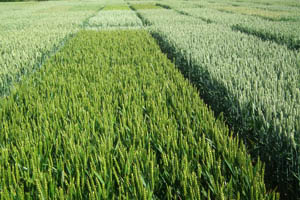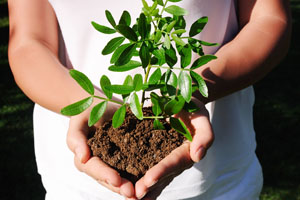Strategies for super soils
Published on 20 June 2011 in Ecosystems and biodiversity
Research by SRUC (formerly SAC) into how soil structural quality is influenced by crop type, machinery and animals has led to the adoption of improved management of crops and livestock. This work has led to the development and adoption of a simple method of assessing soil quality which is used in the field to provide on-the-spot guidance on soil and crop management.

Key Challenges
Soil of good quality is essential for the production of nutritious, healthy food with minimum environmental impact. In Scotland, soil quality is under threat from soil compaction, erosion, intensified agricultural use and climate change. The physical structure of soil is considered crucial to maintaining its quality. However, in contrast to soil chemical properties, clear quantifiable links between soil structural quality and crop production and environmental losses had not been shown.
Key Benefits
Soils in Scotland underpin hugely important agriculture and forestry industries, which are worth more than £2 billion a year to the Scottish economy. The ability to produce good quality food and fibre relies on good soil quality. SRUC research has helped the Scottish Government and SEPA:
- recognise the role of soil structure and soil management in determining soil quality via initiatives such as the Scottish Soil Strategy
- identify potential soil improvement methods and assess their effectiveness
- increase emphasis on ‘soil awareness’ in crop and soil management
- develop and provide farmers and advisors with specific guidance on assessing soil structure so that deterioration and improvements can be monitored
Products include the visual evaluation key, which has been translated into four languages, guidelines for soil improvement and the Farm Soils Plan. Farmers can use these tools to improve profitability, improve product quality and reduce environmental impact.
“SRUC research has helped the Scottish Government and SEPA recognise the role of soil structure and soil management, identify potential soil improvement methods and provide farmers with advice.”
The collective support from the Scottish Government and from Denmark and Brazil over the last 15 years has secured an excellent foundation to obtain leverage for a wide range of new funding sources. These have included Universities in Brazil, the Danish and Scottish advisory services and the UK levy boards. The introduction of the new Scottish Government research Programme 2011-16 will allow research on extending visual evaluation to crop and environmental properties and allow assessment of environmental aspects such as greenhouse gas emissions and carbon sequestration in addition to crop productivity.


Comments or Questions
Related Websites
- Dr Bruce Ball - Research Pr...
- Dr Robin Walker - Research ...
- SRUC Visual Evaluation Of S...
- LEAF Comment - The James Hu...
- BioAgriNomics - Visual Soil...
Our Partners
SRUC commitment in this area is guided by a working group of partners from 10 countries chaired by Bruce Ball.
Find Out More
For more information contact Bruce Ball (Bruce.Ball@sruc.ac.uk), SRUC Crop & Soil Systems, Edinburgh, EH9 3JG.Author
Bruce Ball Bruce.Ball@sruc.ac.uk







